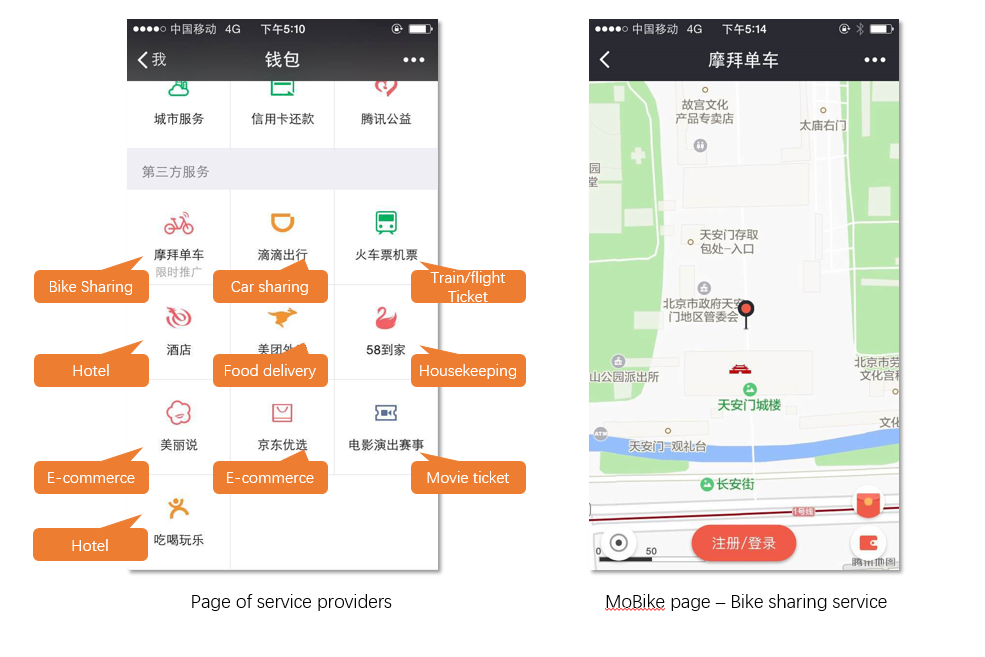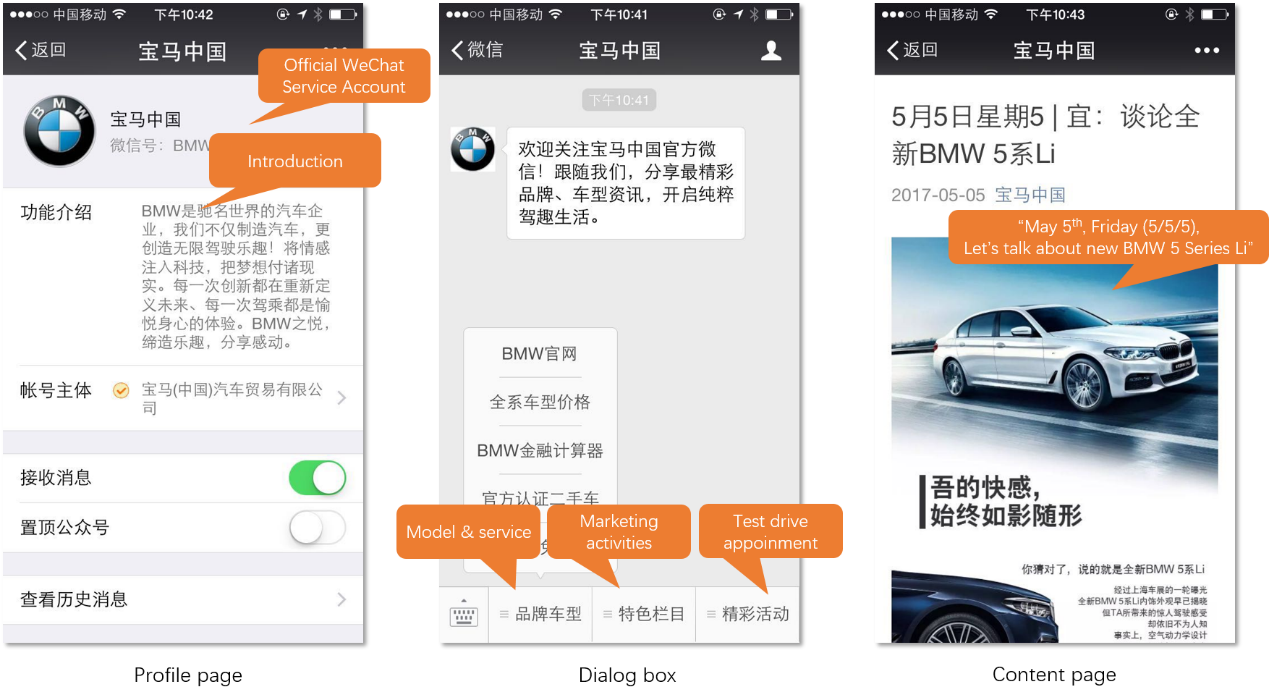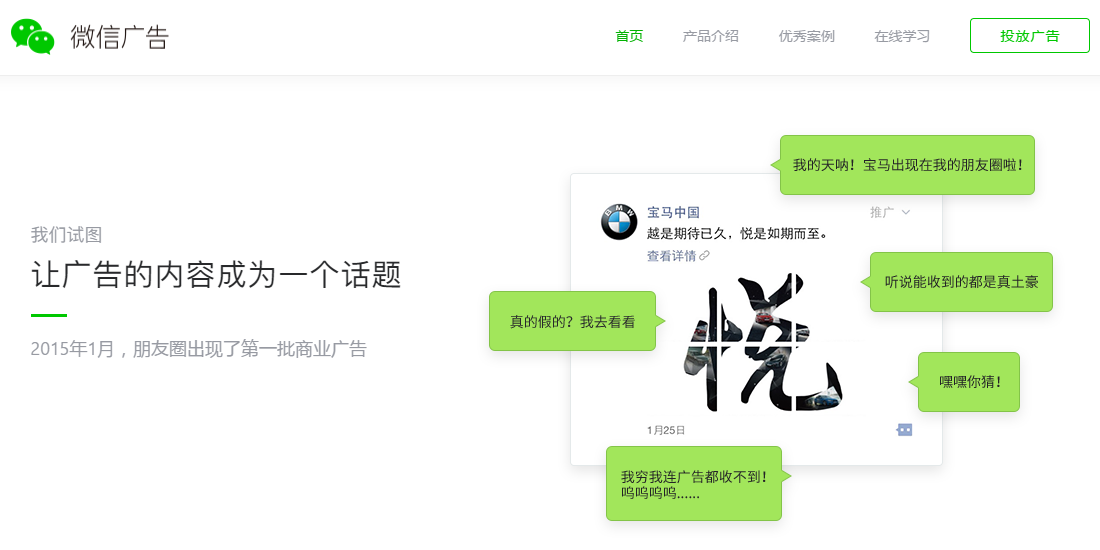China Spotlights
WeChat: the engine of digital business and brands in China
24.05.2017
In our last post, we presented WeChat, which is by far the most important communication service in China and one of the biggest worldwide. In my article I explained the social importance of this all-in-one app. Today we will switch perspectives and have a look at the impact of WeChat on China’s economy.
Boost for digital business in China
Last year, the data volume consumed via WeChat reached a value of nearly 160 billion Renminbi (about 21 billion. Euros) (source: WeChat 2016 Data Report). This represents an increase of 26 percent compared to 2015. It is especially the three big Chinese telecommunication providers in China, China Telecom, China Mobile and China Unicom, who benefited from the proliferation and almost excessive use of WeChat. But software providers are also among the winners of this trend. In recent years, WeChat has taught its users very successfully how to pay for online contents. While just a few years ago, it was still a widespread practice to download intellectual property such as music, books or software illegally, all that and much more (emojis, games, information services etc.) is bought on the WeChat platform now.
Just one small example from the area of emojis, which are very popular here in China: In the emoji menu, there is a “+” button. When you click on it, you end up on a page with dozens of emoji editions created by a variety of artists. While users until recently downloaded them for free, today they are called upon to appreciate the artist’s intellectual effort by paying an amount of money they choose themselves. This “remuneration function” on a voluntary basis is also used for contributions posted in the “WeChat Moments”section, the message function of WeChat. For a post with more than 100,000 clicks, authors often receive remunerations from their readers amounting up to 2,000 Renminbi (approx. 260 Euros). This is a small amount for a social media author, but it is definitely an incentive to produce posts with serious contents and relevance.
Centralized interface for traditional industries
WeChat does not only boost new forms of online business, but it also pushes the traditional offline economy. In 2016, WeChat users made purchases and bookings valued at 273 billion Renminbi (approx. 35 billion Euros, source: WeChat 2016 Data Report). The sectors which benefited most from this were the movie, catering, entertainment, hotel and travel industries. The fact that these products and services are so frequently booked and bought on WeChat has to do with the so-called “WeChat Mini Program” integrated into WeChat: The WeChat Mini Program is a sub-portal on which each provider can be present with their own interfaces, which is why the users don’t have to install any extra apps or switch portals to buy, book or order something, but they can do so directly from the WeChat portal.

Let me give you a recent example of the importance the presence on WeChat can have for companies: In late March 2017, MoBike, the leading Chinese bike rental service, launched its WeChat interface. In the first month alone, 24 million users registered for MoBike, which means the number of users doubled. “WeChat Pay” is the ideal tool to interconnect the online and offline economies: This cashless payment service offered by WeChat allows providers to do their billing directly with their private customers, thus enjoying a maximum of convenience. These direct payment functions are very popular in China, which is demonstrated by the following figure: In December 2016, 600 million out of the 890 million active WeChat users in December 2016 were using WeChat Pay (source WeChat 2016 Data Report).
Indispensable for brand communication in China: “WeChat first”
I already mentioned in other articles of my blog that nowadays, wealthy Chinese consumers reveal a high degree of global orientation and expect high-quality products and services.
Brands wanting to stand the test of competition must offer quite a few aspects in modern China: innovation, uniqueness and benefits, and all that at two levels: both in the messages they communicate and the touchpoints through which their messages are communicated. WeChat also plays a central role in this field, integrating more than ten million so-called public sites. Public sites are company or brand sites as we know them from Facebook. Users can subscribe to them to obtain a variety of services. How relevant these sites have become is expressed by a saying which is widely known in the Chinese marketing world: Entering the Chinese market? Forget a website, it’s WeChat first!”. To mention just one out of many possible examples: The BMW WeChat site as a service account offers more contact opportunities than the brand’s Chinese corporate website. The dialogue box includes different functions: a financial calculator, a used vehicle exchange and the planning of test drives. Besides, the service account regularly sends push messages to the subscribers. This is how relevant information on the brand or on individual models or events reaches potential and existing end customers.

“WeChat first”: Doing business is hardly possible in China nowadays without WeChat. Above are some impressions of the BMW site (left to right: profile page, dialogue box and content site.
From the companies’ perspective, their own WeChat account is also the gate to an ocean of consumer data and thus a perfect source for big data analyses, as WeChat is (even) less restrictive in this respect than Facebook. Besides, Chinese consumers are less worried about data protection and online security. Both are central reasons why all WeChat services are used so intensively - and maybe even carelessly, from a Western point of view. In one of our next posts, we will deal in greater detail with the issue of big data in China.
Towards a new age of customized advertising with WeChat
As I have mentioned repeatedly before, Chinese consumers are increasingly individualized and demanding. It is especially young, modern Chinese consumers who agree that today, business is not only about individual products, but also individualized ways of addressing customers. WeChat already reacted to this trend in 2015, launching its social media platform “WeChat Moments” on which a first series of individualized ads from Coca-Cola, BMW and Vivo (a Chinese smartphone brand) were published.
The underlying principle is simple: Based on an algorithm which takes into account individual data, consumers receive ads in their WeChat newsfeeds. The central criterion is the users’ purchasing power or economic value. In the course of time, wealthy consumers have ended up receiving BMW ads, while Vivo ads were supposed to be sent to middle class consumers. Those who receive Coca-Cola ads are the “losers”. Now the WeChat community is having fun posting screenshots of the ads they have received.

Users comment on and share ads they receive from companies or through the WeChat algorithm, respectively.
But apart from their enjoyment, WeChat users also appreciate the consumption-related benefits of the advertising feeds. The individual ads appearing in the newsfeed section on the one hand feel like messages from friends. On the other hand, the algorithm frequently manages, based on information on individual demographic data, browsing behavior and WeChat usage routines, to fade in ads just at the right moment (occasion, timing).
It is not without reason that in the course of the past year, more and more big players have adopted this kind of advertising. Some of the leaders are automotive brands (Porsche, BMW, Mercedes-Benz, Mini, Jaguar, Cadillac), but also brands from many other industries (Dior, Nike, Levi’s, Armani Beauty, Lancôme, Dell, Samsung, Airbnb, Starbucks, Pepsi.). This strategy yields visible effects: For example, Armani Beauty recently initiated a targeted advertising campaign for lipsticks on the WeChat newsfeed and managed to sell 1,000 of these luxury lipsticks online. However, the financial barriers for the companies are high: The placement of one single ad in certain newsfeeds cost at least 50,000 Renminbi (6,500 Euros). This price can amount up to 180,000 Renminbi (23,000 Euros) depending on the town, the type of ad and the number of ad impressions. And, what is very important: Of course, the ad itself to be shown on this channel must be extraordinary that is, visibly expensive to make, no matter if it is a static ad or a video.
Sources:
- https://blog.wechat.com/2016/12/29/the-2016-wechat-data-report/
- https://mt.sohu.com/20170417/n489008701.shtml
- WeChat Social and Economy Influence Study in 2016, China Aacademy of Iinformation Communication


